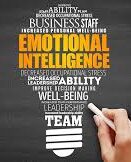Stress eating, also known as emotional eating, is a common response to feelings of stress, anxiety, or sadness. While it may offer short-term comfort, emotional eating can lead to overeating, weight gain, and a negative relationship with food. More importantly, it doesn’t address the root cause of the stress. Breaking this cycle requires understanding the triggers, identifying healthier coping mechanisms, and making conscious changes in your eating habits.
In this article, we’ll explore the connection between stress and eating, how to recognize emotional eating patterns, and practical steps to develop healthier responses to stress.
What is Stress Eating?
Stress eating occurs when individuals use food as a way to cope with difficult emotions rather than as a means to satisfy hunger. The foods chosen during stress eating are typically high in sugar, fat, and salt—comfort foods that provide a temporary feeling of pleasure or relief. However, once the temporary comfort wears off, feelings of guilt or dissatisfaction often follow, reinforcing the cycle.
The Science Behind Stress and Food
When we’re stressed, the body releases the hormone cortisol, which increases appetite and cravings for high-calorie, energy-dense foods. This is part of the body’s natural “fight-or-flight” response, as it prepares to face a threat by storing energy. However, in modern-day situations where stress is often psychological rather than physical, this biological mechanism can lead to unnecessary overeating and weight gain.
Recognizing Emotional Eating Patterns
To break the cycle of stress eating, the first step is recognizing the signs that you may be eating for emotional reasons rather than physical hunger. Here are a few key indicators of emotional eating:
- Eating when not hungry: You reach for food even when your body doesn’t physically need it.
- Craving specific comfort foods: You find yourself wanting sugary, fatty, or salty foods rather than a balanced meal.
- Eating in response to emotions: You eat when you’re feeling anxious, sad, bored, or overwhelmed.
- Mindless eating: You eat without paying attention, such as snacking while watching TV or scrolling through your phone.
Healthier Ways to Cope with Stress
Once you’ve identified emotional eating patterns, the next step is to replace them with healthier coping mechanisms. Here are some practical strategies:
1. Practice Mindful Eating
Mindful eating involves paying attention to your body’s hunger and fullness cues and savoring each bite. Before eating, pause and ask yourself if you’re physically hungry or emotionally seeking comfort. If you’re not truly hungry, consider other ways to manage your emotions.
2. Find Non-Food Coping Strategies
When stress hits, turn to non-food activities that help relieve tension. Some healthy alternatives include:
- Exercise: Physical activity releases endorphins, which can improve mood and reduce stress.
- Breathing exercises or meditation: Deep breathing or mindfulness meditation can calm the nervous system and reduce emotional distress.
- Journaling: Writing down your thoughts and feelings can help you process emotions without turning to food for comfort.
3. Create a Healthy Environment
If you keep your home stocked with healthy foods and limit the availability of junk food, you’ll be less likely to reach for unhealthy snacks when you’re feeling stressed. Fill your pantry with nutritious options like fruits, vegetables, whole grains, and lean proteins.
4. Build a Support Network
Talking to a friend, family member, or therapist about your stress can be an effective way to manage emotions. Social support provides an outlet for discussing problems and can help you feel more connected and less inclined to turn to food for comfort.
5. Get Adequate Sleep
Poor sleep can increase levels of cortisol and affect your ability to make healthy choices, making you more prone to stress eating. Prioritize good sleep hygiene to ensure your body is well-rested and better equipped to handle stress.
Identifying Triggers and Planning Ahead
Understanding the situations that trigger your emotional eating can help you develop a plan to manage those triggers. Keep a food journal to track when and why you eat, noting whether you’re eating due to physical hunger or emotional reasons. If you notice a pattern, you can prepare alternative coping strategies in advance.
For example, if work stress often leads to snacking in the afternoon, try scheduling a short walk during your break instead. If feelings of boredom at home make you reach for snacks, keep a list of activities (such as reading, drawing, or stretching) to engage in instead of eating.
Seeking Professional Help
If emotional eating is impacting your health or well-being, consider seeking help from a healthcare provider or a therapist who specializes in eating behaviors. Cognitive-behavioral therapy (CBT) is an effective treatment for emotional eating, as it helps individuals identify negative thought patterns and develop healthier responses to stress.
A nutritionist or dietitian can also provide personalized guidance on creating a balanced, healthy diet that supports both physical and mental well-being.
Conclusion
Breaking the cycle of stress eating requires patience, self-awareness, and a commitment to adopting healthier coping mechanisms. By recognizing emotional eating triggers and choosing alternative ways to manage stress, you can foster a more positive relationship with food and improve your overall well-being. Remember, the key to overcoming stress eating is not to deprive yourself but to find sustainable, mindful habits that support both your emotional and physical health.

